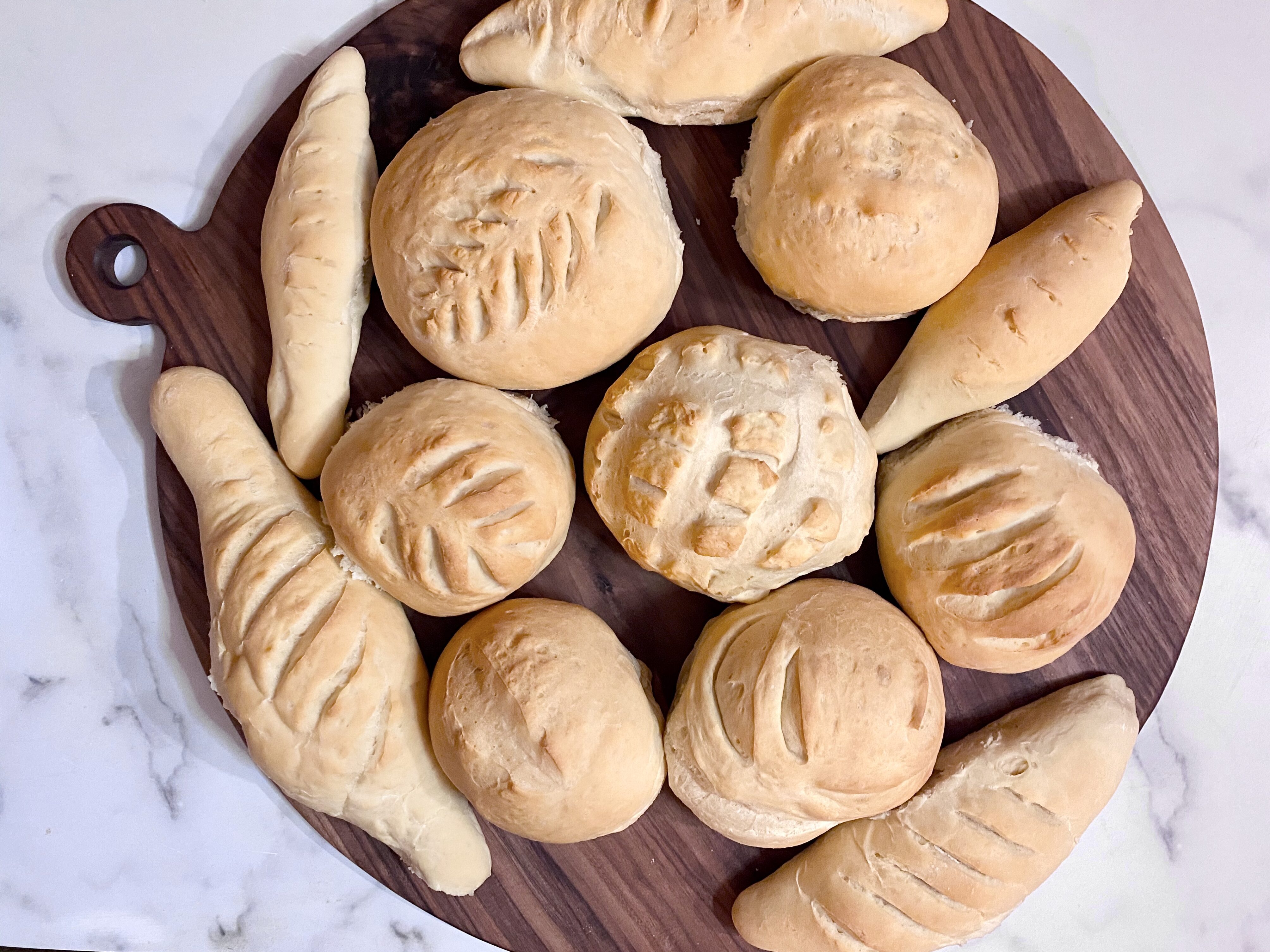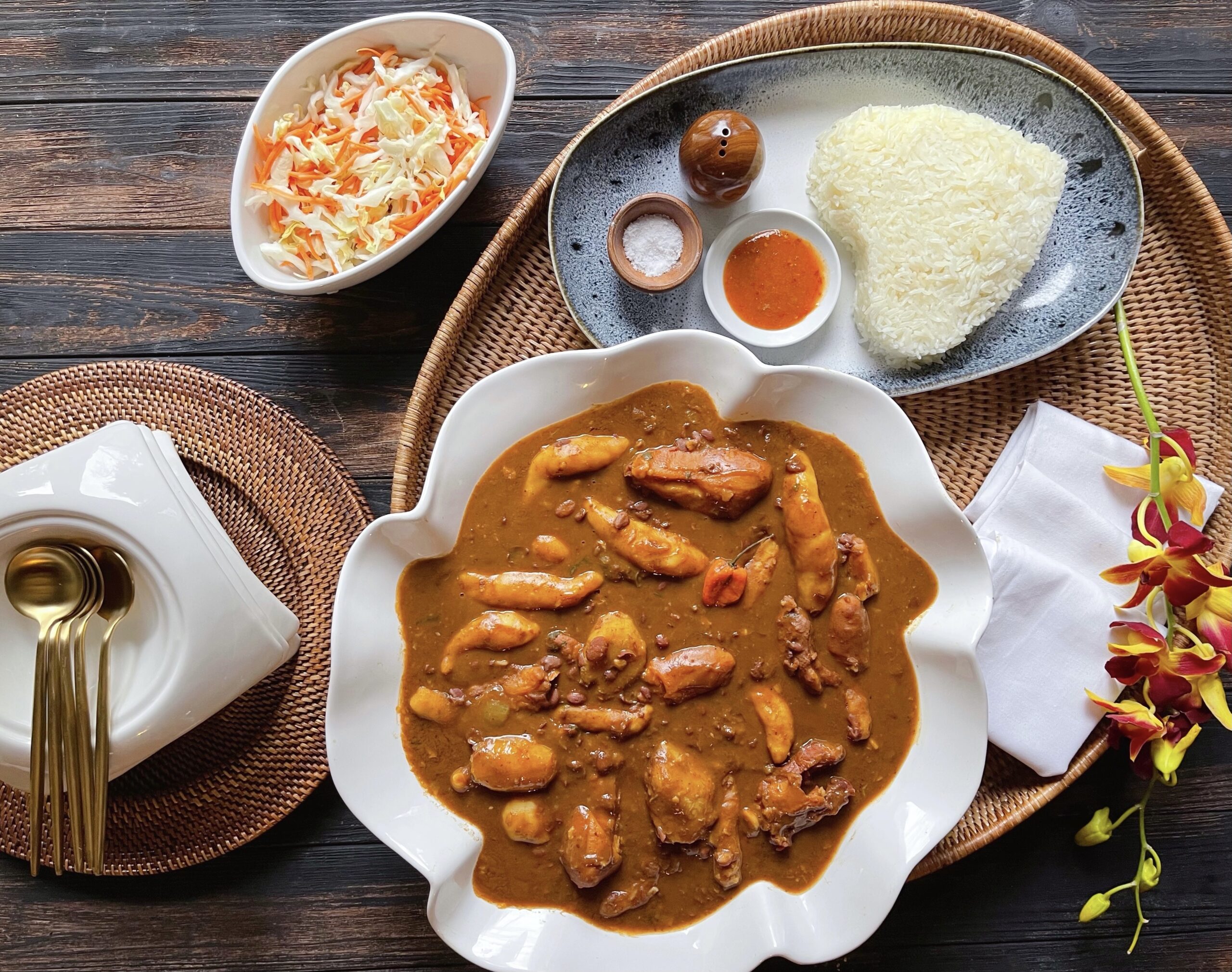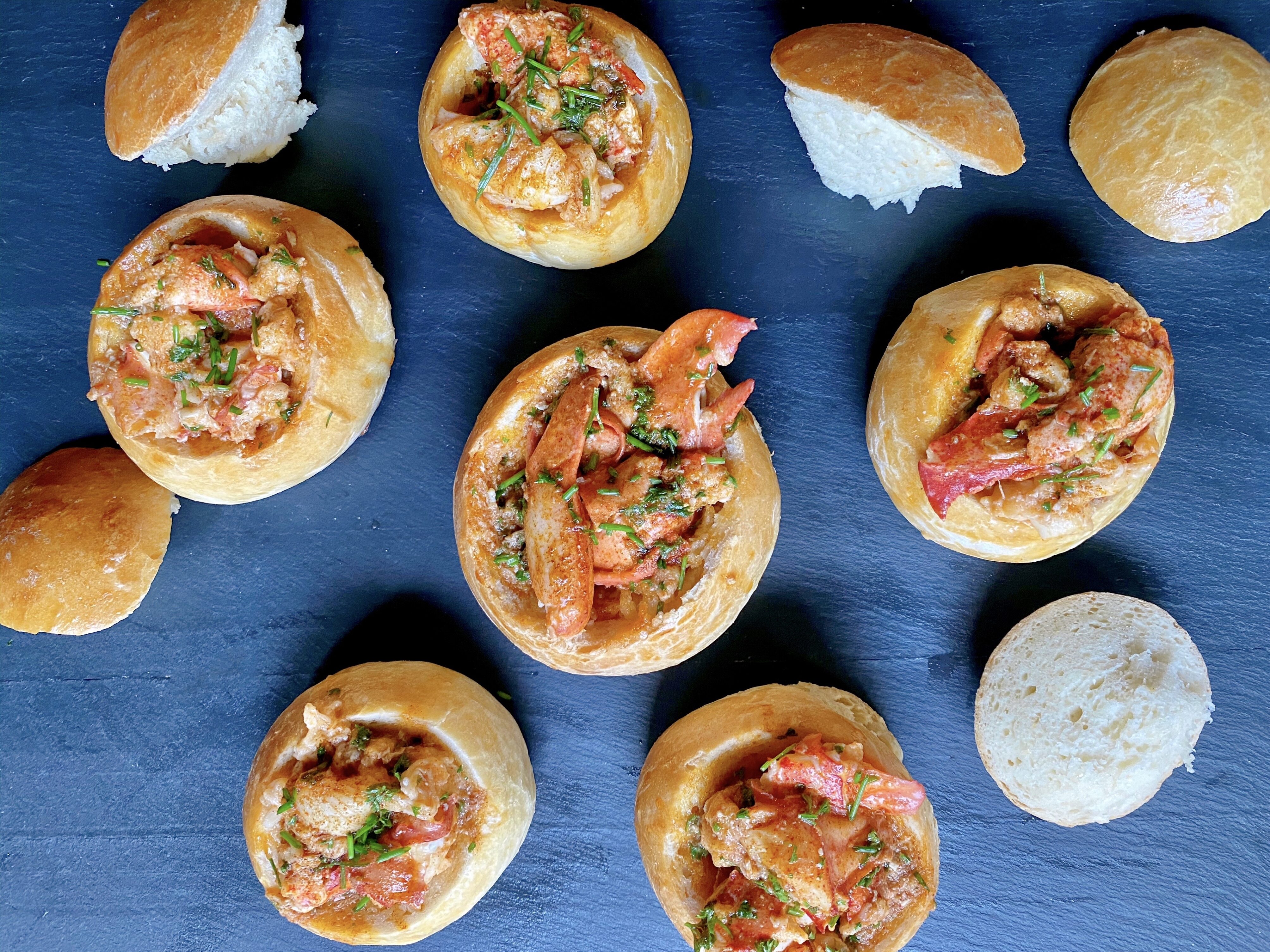
Dumplings, peas and pig tail – dubway, pois and lachay coshon
This past Friday, I was fortunate to be on the receiving end of a mini bucket of salted pig tail. This gem traveled to me from across the country and remained intact, finding it’s way to my kitchen. I’ve not been able to find salted pig’s tail here in the Bay Area, making it a bit more challenging to prepare certain kinds of traditional meals. So I was very touched by the generosity of my dear friend. Although my generous fairy godmother wishes to remain anonymous, her generosity was just what I needed to prepare a hearty traditional Dominican meal and connect with my culture.
Salted pig tail, or lachay cochon saley, commonly known in Dominica, is held to the highest standards just like another salted treasured part of the pig, the snout. When I received my shipment, the first thing that came to mind was Dombway pois and lachay coshon, a true Dominican signature dish. It just couldn’t escape my mind, and I was determined to do justice to the meal.
So on Saturday morning, I started prepping for my meal. I soaked my red beans while I ran to the store to purchase some green plantains. I also got the entire family excited about our feast. My kids are always excited about dumplings, and any type of salted meat. Salted pig’s tail they hadn’t eaten yet, so I wanted to make sure that their first experience was epic.
I used the similar dumpling, peas, and pork recipe I added a few weeks ago. See the recipe link here. The only thing I changed was pre-soaking the peas, using pig tail instead of smoked pork.
Pig tail is really salty as the meat is cured in lots of salt.
How to prepare pig tail for soup

Here’s some instructions on how to prepare pig tail to add to your dumplings, peas and pig tail soup (or any other soup):
- Add the number of pig tail you’d like to use in your soup to a pot
- Add water to cover the tails.
- Bring to a boil
- When the tails have boiled for about 30 minutes, change water adding fresh hot water to the pot (changing the water helps get rid of the excess salt and using hot water helps keep the meat at the right temperature, so it doesn’t take long to get tender. You can repeat this.)
- When the meat is cooked, and much of the salt is gone, remove it from the pot to cool.
- Then use a sharp knife to find the joints and cut the tail into two to three pieces along the joints.
- Add the pieces to your soup in the final stages, so it doesn’t get too soft.





[…] us and our creole culture: callaloo, souse, titiwi accra, pelau, bakes, pumpkin soup, cassava, dumbway pois and vwan coushon, braff, tonton roasted breadfruit, codfish, smoke herring, coubouillon cocoa tea, fried fish and […]